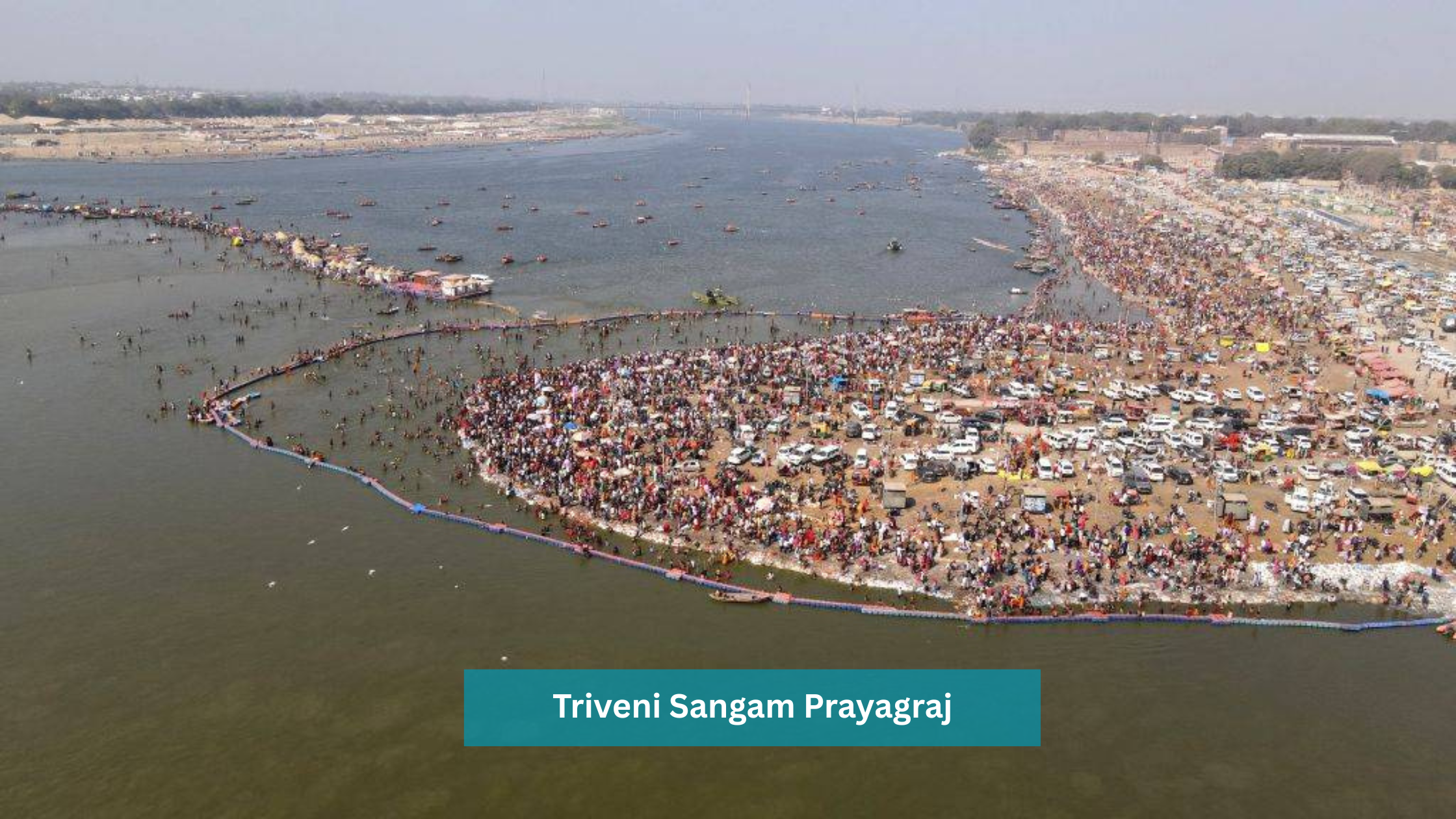Prayagraj, formerly known as Allahabad, isn’t just a city in Uttar Pradesh, India; it’s a place brimming with history and culture. For centuries, it has held immense significance, transforming from an ancient settlement to a major political, religious, and cultural powerhouse. But how exactly did this transformation occur? Let’s dive into the factors that contributed to Prayagraj’s rise to prominence.
The Strategic Location: A Foundation for Power
One of the primary reasons for Prayagraj’s historical importance is its strategic location. The city sits at the confluence, or meeting point, of three of India’s holiest rivers: the Ganga, the Yamuna, and the mythical Saraswati. This “Triveni Sangam,” as it’s known, made Prayagraj a sacred site, attracting pilgrims and religious scholars for millennia. This constant flow of people not only boosted the local economy but also made it a hub for the exchange of ideas and cultural practices.
Beyond its religious significance, the confluence also offered immense strategic advantages for ruling powers. Control over this region meant control over vital trade routes and access to resources from the fertile plains surrounding the rivers. This made Prayagraj a coveted prize for various empires throughout history.
Ancient Roots and the Rise of Empires
Prayagraj’s history stretches back to ancient times. In the past it was known as Kaushambi and Prayag. It features prominently in ancient Hindu texts and Buddhist scriptures. The city’s importance grew further during the Mauryan Empire (322-185 BCE), one of the largest empires in the Indian subcontinent. Emperor Ashoka, a key figure in Mauryan history, erected one of his famous pillars in Kaushambi, which was later moved to Allahabad Fort, demonstrating the city’s importance even then.
Later, the Gupta Empire (320-550 CE) also recognized the strategic value of the region. Their control over Prayagraj helped them maintain their dominance over northern India. The city served as a crucial link between the eastern and western parts of their vast empire, facilitating trade and communication.
The Mughal Era: Allahabad’s Golden Age
The Mughal period marked a significant turning point in Prayagraj’s history. In 1583, Emperor Akbar recognized the city’s strategic and religious importance and established a fort at the confluence of the rivers. He renamed the city “Allahabad,” meaning “the Abode of God,” signifying its significance within the Mughal Empire. The Allahabad Fort became a vital military stronghold and a center of Mughal administration in the eastern regions.
Under Mughal rule, Allahabad flourished as a major commercial and cultural center. The city’s artisans and craftsmen produced exquisite goods, attracting merchants from across the globe. The Mughals also patronized art, literature, and architecture, contributing to the city’s rich cultural heritage. Allahabad became a melting pot of cultures, blending Persian, Central Asian, and Indian influences.
British Rule and the Indian Independence Movement
In the 18th century, the British East India Company gradually gained control over India, including Allahabad. The city became an important administrative center under British rule, serving as the capital of the North-Western Provinces (later the United Provinces). The British further fortified the Allahabad Fort and established various institutions, including Allahabad University, which became a leading center of education in India.
Prayagraj played a pivotal role in the Indian independence movement. The city became a hotbed of nationalist activities, with prominent leaders like Motilal Nehru and Jawaharlal Nehru making it their home base. The Nehru family’s ancestral home, Anand Bhavan, served as a hub for political discussions and planning. Many crucial decisions related to the freedom struggle were made in Allahabad, solidifying its place in Indian history.
Post-Independence and Continued Significance
After India gained independence in 1947, Allahabad continued to be an important center for politics, education, and culture. The city’s High Court is one of the oldest and most prestigious in India. It is also renowned for hosting the Kumbh Mela, the largest peaceful gathering of pilgrims in the world, which occurs every 12 years and attracts millions of devotees. In 2018, the city was officially renamed Prayagraj, reflecting its ancient name and heritage.
Key factors in Prayagraj’s Rise: A Summary
- Strategic Location: The confluence of the Ganga, Yamuna, and Saraswati rivers provided both religious and strategic advantages.
- Ancient History: The city’s roots in ancient civilizations and empires established its initial importance.
- Mughal Patronage: The Mughals, particularly Akbar, recognized and enhanced the city’s strategic and cultural value.
- British Administration: The British made Allahabad a key administrative center, further developing its infrastructure and institutions.
- Role in the Independence Movement: Allahabad served as a crucial hub for nationalist activities and the Indian freedom struggle.
Frequently Asked Questions
Why is the confluence of the rivers so important?
The “Triveni Sangam” is considered a sacred site in Hinduism, where the Ganga, Yamuna, and mythical Saraswati rivers meet. Bathing at this confluence is believed to cleanse one’s sins and bring spiritual liberation.
What was Allahabad renamed to Prayagraj?
The city was renamed Prayagraj in 2018 to reflect its ancient name and to emphasize its connection to its Hindu heritage.
What role did Allahabad play in the Indian Independence Movement?
Allahabad served as a major center for nationalist activities, with leaders like Motilal Nehru and Jawaharlal Nehru playing key roles. Anand Bhavan, the Nehru family’s home, was a hub for political discussions and planning.
In conclusion, Prayagraj’s journey to becoming a historical powerhouse is a testament to its strategic location, rich cultural heritage, and its significant role in shaping the political landscape of India. From ancient empires to the freedom struggle, Prayagraj has consistently played a vital role in the country’s history. Its continued importance as a religious, educational, and cultural center ensures that its legacy will endure for generations to come.



